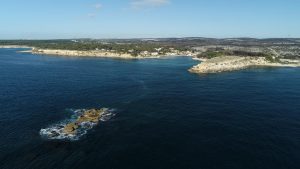Co-hosts’ summary of UNGA High-level event ‘Transformative Action for Nature & People’ on 22nd September 2021
Introduction
1.On 22 September 2021, more than 53 Leaders and representatives convened at a high-level event of the UN General Assembly on ‘Transformative Action for Nature & People’ to reaffirm the urgency of reversing biodiversity loss by 2030. This summary provides an overview of the ambitious actions showcased and announced during the event, general considerations referred to during discussions, and proposed next steps.
2. At the PreCOP (Conference of Parties)of the CBD hosted by Colombia in August 2021, the High Ambition Coalition for Nature and People (HAC for N&P), the Global Ocean Alliance (GOA) and the Leaders’ Pledge for Nature (LPN) came together and presented a joint statement on joining forces for nature and calling for an ambitious outcome at CBD COP15. Members of the coalitions stated their determination to work together to translate joint commitments into concrete agreements and ambition in the Global Biodiversity Framework in order to ensure transformative action on the ground and to find constructive solutions to overcome challenges confronting us.
3. Following the joint statement, the LPN Core Group and the co-chairs of the HAC for N&P and GOA worked together to deliver the UNGA High-level event ‘Transformative Action for Nature & People’ (the event press release can be found here, and an event programme can be found here). The UNGA High-level event was held on 22nd September 2021 at 8AM EDT in a hybrid format during the UNDP Nature for Life Hub opening session. It was co-hosted by Antigua & Barbuda, the Alliance of Small Island States (AOSIS), Belgium, Bhutan, Colombia, Costa Rica, European Union (EU), France, Gabon, UK and Vietnam as well as partners: the Convention on Biological Diversity (CBD), National Geographic & Campaign for Nature, Nature 4 Life Hub, Planetary Emergency Partnership, UNEP, UNDP, and World Wide Fund for Nature.
4. The event sought to reaffirm the urgency of reversing biodiversity loss by 2030 to address the interdependent crises of biodiversity loss, ecosystem degradation and climate change. It also fulfilled the commitment within the LPN to meet at UNGA-76 and was an opportunity to present progress on the growing membership of the HAC for N&P (72 members, including the European Commission), the GOA (61 members) and the LPN (92 endorsers, including the EU). Together these three coalitions represent 120 countries, 41% of global GDP and 32% of the world population.
5. 15 Heads of State and Government 1 , 10 ministers2 , 5 high-level and senior UN officials, and 12 leaders from Indigenous peoples and local communities, the finance sector, philanthropy and civil society delivered statements during the event which was moderated by Dr. Musonda Mumba (Director for the Rome Centre for Sustainable Development, UNDP). In addition, 12 leaders3 participated in live panel discussions on ‘Transformative Actions to Conserve, Sustainably Use, and Restore and Mainstream Biodiversity’ and ‘Financing a Nature Positive World’. The event attracted over 39, 000 views.
Ambitious actions and announcements
6. The following actions were showcased and announced during the event:
6a. Financial commitments
- “Protecting Our Planet Challenge”: Nine philanthropic organizations4 launched the Protecting Our Planet Challenge and pledged $5 billion (the largest-ever philanthropic commitment to nature conservation) to protect and conserve 30% of the planet by 2030 by supporting protected areas and with the inclusion, participation and partnership of Indigenous peoples and local communities.
- Finance for Biodiversity Pledge’s initiative: 75 financial institutions – worth a collective €12 trillion in assets – committed to protecting and restoring biodiversity through their financial activities and investments and to assess their biodiversity impact, set targets and disclose progress in their annual reports before 2025.
- Green Climate Fund: Continues to devote a considerable portion of its $9 billion portfolio, and committed to expand its contribution, to restoring ecosystems while creating jobs.
- European Commission: Reiterated that the European Union will double its external funding for biodiversity in the next 7 years compared to 2014-2020 and will particularly assist the most vulnerable countries.
- Germany: Announced a desire to increase their contribution to international climate financing to an annual €6 billion by 2025.
- Belgium: Announced it will increase their global climate funding by 30% from €70 million to €100 million
6b. Protection and restoration of land and ocean
- Costa Rica: Announced that it would increase ocean protection from 2.67% to 30%. This will include expanding the Cocos Islands National Park.
- Nigeria: Announced the establishment of ten new national parks across the country and the creation of marine protected areas.
- Austria and Hungary (and Slovenia, Croatia, Serbia): Mentioned the recentlyestablished UNESCO biosphere reserve, the Mura-Drava-Danube reserve (the so-called ‘Amazon of Europe’). This is now the continent’s largest riverine protected area and the world’s first five-nation biosphere reserve.
- Indigenous conservation leaders from areas in Canada’s James Bay, Hudson Bay, and Labrador Sea: Announced the aim to create six new Indigenous-led Protected Areas.
- 30by30 ocean target: Between the GOA, HAC for N & P, and other initiatives, over 100 countries now support the ocean “30by30” target.
6a. Sustainable Consumption and Production
- Antigua and Barbuda: Announced steps toward a transformational legally binding agreement to combat plastic pollution on behalf of the more than 70 member states of the AOSIS.
- Belgium: Showcased their national efforts to transition to sustainable food systems.
General Considerations
7. Leaders emphasised that protecting and conserving at least 30% of the land and of the ocean globally by 2030 was a necessity which provides a clear triple win for biodiversity, climate and people. This was matched with several announcements for new national protected areas and the welcome news that over 100 countries now support the 30% global ocean protection target.
8. Leaders converged on the need to unlock finance and shift away from harmful investments, building on the understanding that investing in nature ultimately benefits economies, livelihoods and people. Leaders welcomed the generous philanthropic donations and the commitment to stop harmful activities and investments for biodiversity, but underscored that this should complement, and not replace, public finance. Further public and private commitments are required, as well as strong collaboration between governments, Indigenous Peoples, and local communities within a robust accountability framework.
9. Leaders underlined the importance of striving towards a nature-positive, net-zero and equitable future. They also stressed the need to take a whole of society approach, acknowledging the crucial role of indigenous peoples and local communities for effective and meaningful conservation and restoration of nature, and recognising their participation and rights according to national legislation. Some leaders highlighted additional areas of focus, including the necessity to: prioritise climate action (even during the pandemic), transform fiscal and trade policies, manage the ocean sustainably including tackling marine pollution, and continue to make emission cuts e.g. by transitioning to renewable energy sources.
10. The upcoming biodiversity and climate change COPs were emphasised by many leaders as having the potential to shape the future of humankind, and most leaders concluded with the stark message that “humanity is running out of time to make peace with nature”.


